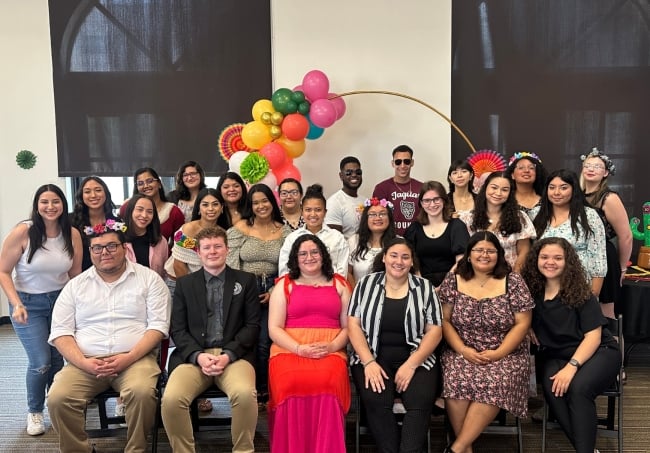Landing a job isn’t a lottery. It’s a string of deliberate moves where a handful of abilities matter far more than a long resume or a flashy portfolio. This article walks through ten concrete skills hiring managers notice first, shows how to demonstrate them, and offers practical steps to build each one, so you increase your chances of receiving a Job Offer when it matters.
Why focusing on skills wins over credentials
Employers can verify a degree with a click, but they hire people who move projects forward and work well with others. In interviews and on the job, measurable behaviors and reliable habits carry more weight than pedigree. Demonstrable competence lets a candidate reduce uncertainty for the employer, and that reduction of risk is what turns an interview into a Job Offer.
Concentrating on the right mix of technical and interpersonal abilities also shortens the path from applicant to team member. Recruiters look for signals: clear communication, evidence of learning, and patterns of ownership. If you present those signals consistently, the decision to hire becomes obvious.
How to read this list
Each item below explains what the skill is, why hiring teams value it, and concrete ways to show it during the application and interview process. Where it helps, I share small examples from my own career to make the advice feel practical rather than theoretical.
1. Clear, persuasive communication
Communication is more than speaking well; it’s structuring ideas so others can act on them. Whether you’re summarizing a project, writing an email, or explaining trade-offs during an interview, clarity builds trust. Interviewers often gauge future teamwork through how candidates talk about past work.
Demonstrate this skill by preparing crisp stories that follow a simple arc: situation, action, result. Use numbers when possible and avoid vague praise. If you can explain a complex idea in plain terms, you show you understand it deeply and can bring others along.
How to show it in practice
Start your answers with a one-sentence summary and then fill in the essential details. When delivering a portfolio walkthrough, state the goal, outline constraints, and highlight outcomes. In writing, make subject lines specific and open with the conclusion so the reader knows what to expect.
Personal note
Early in my career I lost a promising freelance contract because my proposal rambled. After that I learned to lead with the outcome and back it up with three supporting facts. The following projects ran smoother and I began receiving offers instead of rejections.
2. Problem-solving and structured thinking
Employers pay for solutions not effort. Structured problem-solving — breaking issues into parts, prioritizing, testing hypotheses — shows you can convert ambiguity into progress. This is particularly valuable for roles without a script, where the daily work requires judgment calls.
In interviews, take time to outline your approach. Interviewers value the reasoning that leads to an answer as much as the answer itself. Explain assumptions, consider alternatives, and say what additional data you would want.
How to practice the skill
Work on case-style questions, but also reflect on small decisions in your current role. Try writing one-sentence problem statements for issues you see and list three possible remedies ranked by impact and effort. Over time your brain will start spotting structure in messy situations.
3. Learning agility and curiosity
Technology and markets change rapidly; companies hire people who learn fast. Learning agility means absorbing new information, applying it quickly, and fixing mistakes without ego. Employers equate curiosity with long-term potential, which is why stories about rapid upskilling stand out.
Show learning agility by describing concrete times you acquired a new capability under pressure — the time frame, resources used, and measurable outcome. Mention what you read, courses completed, or feedback you sought. Specifics make your narrative believable.
How to signal it during the process
Bring examples where you closed a knowledge gap in weeks rather than months. If you’ve built a side project, solved a broken pipeline, or led a new initiative, quantify the result and note what you learned from failure. Hiring managers trust applicants who can rapidly convert knowledge into output.
4. Ownership and results orientation
Ownership means taking responsibility for an outcome and the messy path to reach it. Companies want people who will not only start tasks but also ensure they finish with quality. Results orientation is about prioritizing impact over activity and communicating progress regularly.
When describing accomplishments, show how you tracked progress, adjusted plans, and ensured delivery. Use metrics: revenue improved, defects reduced, deadlines hit. Those are tangible signs you understand what success looks like.
How to demonstrate ownership
Use “I” for your role but acknowledge collaborators where relevant. Share a brief timeline of actions you took, why you pivoted when things changed, and how you measured success. This clarifies your contribution without sounding like you’re inflating it.
5. Collaboration and team fit
Strong performers still fail in isolation. Employers need people who integrate well with existing teams, resolve conflict constructively, and lift others’ work. Cultural fit is not about sameness; it’s about aligning values and working rhythms so the team can move as one.
To show you’re a good collaborator, give examples of cross-functional work, how you negotiated priorities, and how you supported teammates. Interviewers want to hear how you build rapport and how you handle disagreements without creating friction.
Assessment cues
During interviews, watch for cues about team dynamics and ask thoughtful questions. Candidates who ask about team rituals, feedback cadence, or onboarding show they’re thinking about integration, not just tasks.
6. Emotional intelligence
Emotional intelligence — reading other people, regulating your response, and shaping interactions — keeps projects on track. It’s the difference between a technically excellent hire who derails team morale and a slightly less technical person who accelerates everyone else’s work.
Share stories that reveal self-awareness. For instance, describe a time you received hard feedback and the concrete steps you took to improve. This demonstrates humility, adaptability, and the capacity to grow from criticism.
Practical ways to build it
Practice active listening: paraphrase what others say and ask clarifying questions. Solicit feedback and act on it visibly. These habits help you manage relationships and signal to employers that you’ll be steady under pressure.
7. Role-specific technical competence
No amount of soft skills replaces the core technical capabilities required for a role. Recruiters want to know you can do the work end-to-end or learn fast enough to get there. Demonstrating recent, relevant experience beats ancient credentials every time.
Translate technical experience into business outcomes when possible. Instead of listing technologies, describe what you built, the constraints you handled, and the impact on users or the bottom line. That narrative helps non-technical interviewers understand your value.
How to prepare practical evidence
Bring artifacts where allowed: a short code sample, a case study, a design mock, or a process diagram. Explain decisions and trade-offs in the artifact and highlight where you moved from problem to production. Evidence reduces doubt.
8. Prioritization and time management
Most roles come with more possible work than time to do it. Prioritization is selecting the right things and saying no to the rest gracefully. Employers look for people who identify high-leverage tasks and protect time for deep work.
Talk about frameworks you use: impact-effort matrices, weekly planning rituals, or simple prioritization rules like “clear blockers first.” Show how these habits led to consistent delivery rather than frantic activity.
Concrete interview examples
Share a brief scenario where priorities shifted and you reallocated resources to save the most important deliverable. Explain the decision criteria and the result. That clarity illustrates practical judgment and reliability.
9. Storytelling and interview presentation
A great story is the vehicle for most other skills. If you can weave facts into a compelling narrative with stakes, action, and outcome, you make it easy for interviewers to remember you. Presentation includes body language, pacing, and the ability to tailor your message.
Practice concise stories for key themes: leadership, problem-solving, influence, and failure. Use the STAR format — situation, task, action, result — but don’t recite it mechanically. Tell the story like you’d tell a colleague over coffee, but with the essential facts intact.
Tips for memorable answers
Open with the result to grab attention, then add context and your role. End with a short reflection: what you learned and how it changed your approach. These small framing moves make stories stick and show growth-oriented thinking.
10. Negotiation and the closing conversation
Receiving a Job Offer is only part of the final stretch. Negotiation skills — expressing value, asking for what you need, and reaching a fair agreement — finalize the match. Employers prefer candidates who negotiate professionally because it signals clarity and mutual respect.
Prepare by knowing market ranges, your non-monetary priorities, and the offer components that matter to you. Use openings like, “I’m excited about this role; before accepting, can we discuss…” This frames the talk collaboratively rather than combatively.
Negotiation etiquette
Be transparent about priorities and flexible on trade-offs. If you ask for higher compensation, explain why in terms of market data or additional responsibilities you’ll own. If the total package can’t change, ask for other support such as flexible hours or professional development budget.
Quick reference table: skills and how to prove them
The following table summarizes the skills and practical evidence to bring to interviews. Use it as a checklist when preparing for conversations that decide hiring outcomes.
| Skill | What to show | Interview cues |
|---|---|---|
| Communication | Clear summaries, concise emails, portfolio walkthroughs | One-sentence answers, logical structure |
| Problem-solving | Structured approaches, hypotheses, measured outcomes | Step-by-step reasoning, alternatives considered |
| Learning agility | Recent upskilling, rapid project pivots | Short timelines for competency gains |
| Ownership | End-to-end examples with metrics | Clear timelines and accountability |
| Collaboration | Cross-functional projects, conflict resolution | Questions about team rituals and feedback |
| Emotional intelligence | Feedback stories, empathy in interactions | Calm responses to behavioral questions |
| Technical competence | Relevant artifacts, production examples | Hands-on exercises or technical questions |
| Prioritization | Frameworks, re-prioritization examples | Trade-off discussions |
| Storytelling | STAR-like narratives, memorable takeaways | Endings that include learning |
| Negotiation | Market knowledge, flexible asks | Closing questions about next steps |
Preparing for interviews: a practical timeline
Preparation is cumulative. Start by clarifying the role and its top three priorities. Then map your experience to those priorities with one strong example per skill. This targeted preparation beats trying to rehearse every possible question.
A typical plan works like this: in week one, research the company and role; in week two, draft and refine stories; in week three, practice mock interviews and refine your artifacts. The final days are for resting your voice, checking logistics, and preparing questions for the interviewer. This rhythm balances depth with freshness.
What to include in your stories
A good example names the problem, your role, the action you took, and the measurable outcome, then ends with a succinct lesson. Keep each story to a few minutes. Interviewers listen for the nugget they can repeat to hiring teams when comparing candidates.
Crafting your resume and portfolio to highlight these skills
Your resume is a ticket to the conversation, not the verdict. Prioritize recent achievements that show impact and reflect the skills listed above. Replace long task lists with short bullet points that start with a verb and end with a metric or outcome.
For portfolios, include a one-paragraph summary for each project that states the problem, your unique contribution, and the result. If a project is confidential, describe the context at a high level and discuss your role and the quantifiable effect. Clear, honest descriptions earn trust.
Handling behavioral questions without sounding rehearsed
Interviewers often ask behavioral questions to see patterns. To avoid sounding canned, keep the core of your story consistent but change the lead-in and emphasis based on the question. That shows you have real experiences, not polished scripts.
Be honest about mistakes and what you’d do differently today. Candidates who sanitize setbacks come across as inexperienced. When you discuss failure, focus on the corrective steps and the learning that followed.
Follow-up and persistence
The period after an interview is fertile ground. A thoughtful follow-up email that references a specific discussion point keeps you top of mind. It also creates an opportunity to share a short artifact or a data point you forgot to mention.
If you don’t hear back within the timeframe they promised, a polite nudge is appropriate. Reiterate your interest and attach any relevant new evidence of fit. Timely persistence often separates the candidate who fades from the one who secures the Job Offer.
On being authentic: why honesty beats embellishment
Hiring teams have learned to spot inflated claims. Be candid about your strengths and gaps, because being a good fit often depends on complementary skills within the team. If you lack a specific technical skill, show a plan to acquire it and point to similar wins that prove you can learn quickly.
Honesty builds long-term trust. Candidates who misrepresent themselves may get through an initial hire, but struggles down the road hurt careers and reputations. Honest representation increases the likelihood that your next role will be meaningful and sustainable.
Exercises to develop these ten skills
Skills improve with deliberate practice. Here are short exercises that map to multiple items on the list and fit into busy schedules.
- Daily one-sentence summaries: explain what you worked on and why it mattered to a non-expert.
- Weekly case breakdowns: pick a problem in the news and outline a structured response in 15 minutes.
- Feedback loop: solicit brief feedback from a colleague after every major deliverable and record one action you’ll take.
- Mock interviews: rotate storytelling practice with a peer and record the sessions for self-review.
- Artifact polish: choose one work sample each month and refine it into a sharable case study.
Common pitfalls to avoid
Some mistakes routinely derail otherwise strong candidates. Avoid overloading answers with jargon, failing to quantify results, or minimizing teammates’ contributions. Overconfidence without humility and unresponsiveness after interviews are also red flags.
Another frequent issue is treating every interview like a performance instead of a conversation. Approach interviews as mutual discovery. Ask smart questions and listen actively; those behaviors demonstrate the same qualities employers want you to bring to the job.
How hiring decisions are typically made
Understanding the process helps you target your efforts. Decisions often involve multiple stakeholders: the hiring manager, peers, HR, and sometimes leadership. Each group has different priorities, so tailor your evidence accordingly. Managers check for execution ability; peers look for collaboration; HR verifies fit and compensation expectations.
Prepare to address each perspective. For managers, bring outcome-driven examples. For peers, highlight collaboration and communication. For HR, have your salary expectations and logistical constraints clearly thought through. This multi-angle preparation makes it easier for the hiring committee to say yes.
When you receive the Job Offer: next steps
Get the offer in writing and review the details carefully: compensation, benefits, role expectations, reporting line, and start date. If anything matters to you — flexible hours, remote work, parental leave — raise it early and respectfully. Decisions at this stage should be pragmatic and aligned with your priorities.
Before accepting, consider the growth trajectory and the types of projects you’ll own. A somewhat lower salary for a role that accelerates learning and responsibility can be the better move long-term. Think in terms of opportunity and not only immediate reward.
Final checklist before interviews
Use this short checklist to make sure your application reflects the ten skills that convert conversations into offers:
- Three concise stories that highlight impact, learning, and collaboration.
- One or two artifacts that demonstrate technical competence or leadership.
- Market research and clear priorities for negotiation.
- A plan for follow-up and specific questions for each interviewer.
- Rest and a brief rehearsal so your communication feels natural.
Securing a Job Offer is rarely a single moment of brilliance. It’s the accumulation of reliable signals: you communicate clearly, solve problems with structure, learn quickly, take ownership, and work well with others. Each of these ten skills gives hiring teams confidence that you’ll deliver and fit into the team. Focus on building them deliberately, present concrete evidence, and approach conversations as opportunities to both evaluate and be evaluated. That mindset converts interviews into offers and offers into sustainable career moves.





